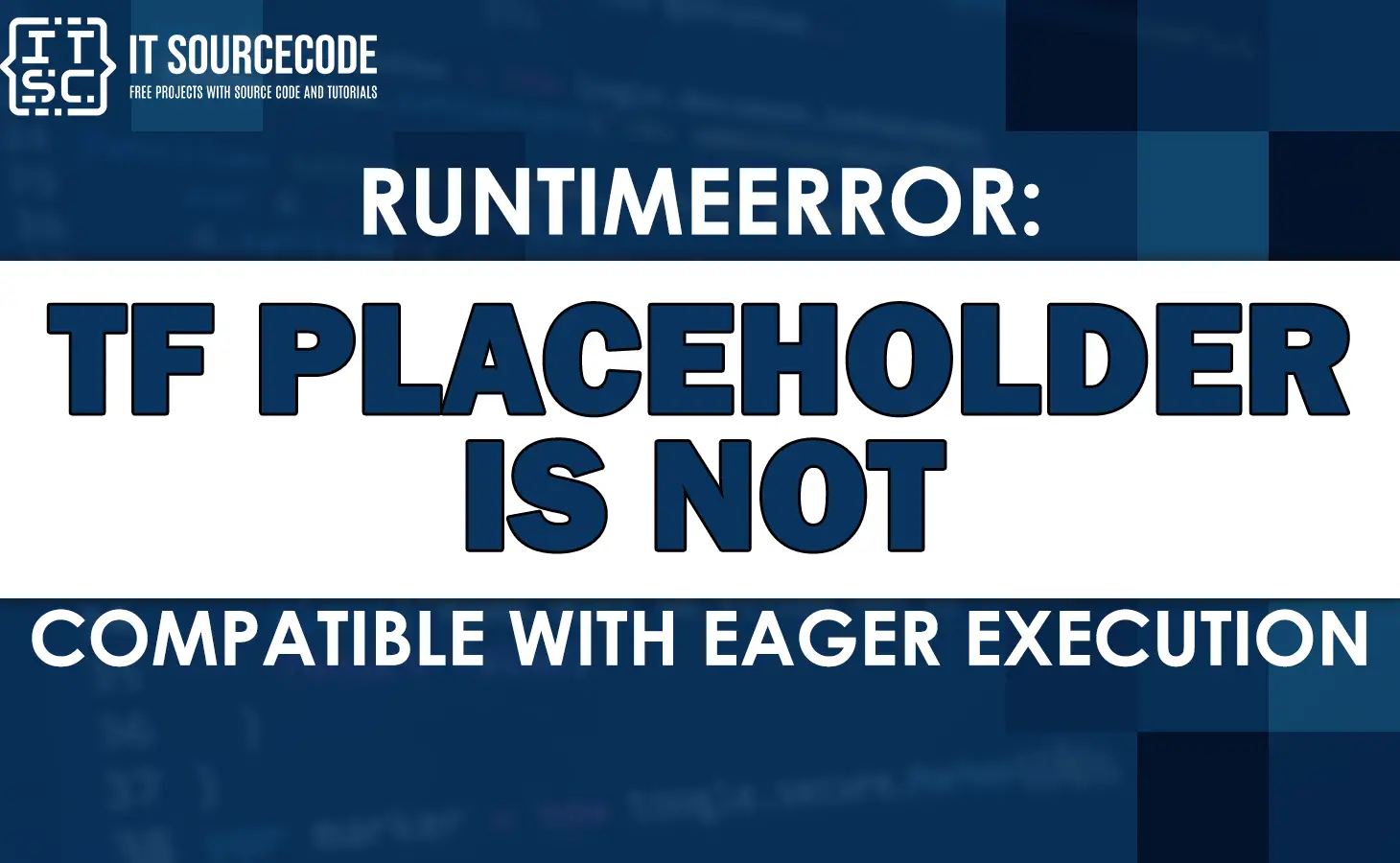One of the most common errors might encounter is the Runtimeerror Tf Placeholder Is Not Compatible with Eager Execution error.
The error occurs when we attempt to use a TensorFlow placeholder with eager execution.
In this article, we will explain in details what causes this error and we will provide some solutions on how to resolved it.
Why this Error Occur?
The “RuntimeError: tf.placeholder() is not compatible with eager execution” error occurs because placeholders are a concept from TensorFlow 1.x that is not compatible with eager execution in TensorFlow 2.x.
How to Solve the runtimeerror: tf.placeholder is not compatible with eager execution. Error?
The following are the solution to solve the runtimeerror: tf.placeholder is not compatible with eager execution.
Solution 1: Disable Eager Execution
The easiest way to solve this error is to disable eager execution. You can do this by adding the following code at the beginning of your script.
import tensorflow as tf
tf.compat.v1.disable_eager_execution()
This will disable eager execution and allow you to use placeholders and other TensorFlow operations that are not compatible with this method.
Solution 2: Use a Variable Instead of a Placeholder
The another solution to solve this error is to use a variable instead of a placeholder. Variables are similar to placeholders, yet they can be changed after they are created.
Here’s an example on how to create a variable in TensorFlow:
import tensorflow as tf
my_var = tf.Variable(0, dtype=tf.float32)
You can use the variable in your code just like you would use a placeholder. However, keep in mind that variables can be more memory-intensive than placeholders, so use them properly.
Solution 3: Use a Different Mode of Execution
To solve this error you can try using a different mode of execution for the parts of your code that require placeholders.
For example, you can use graph execution for the parts of your code that use placeholders, and eager execution for the rest of your code. Here’s an example of how to switch between eager and graph execution:
import tensorflow as tf
tf.compat.v1.disable_eager_execution()
# Code that requires placeholders
with tf.compat.v1.Session() as sess:
# Switch to graph execution
tf.compat.v1.disable_eager_execution()
# Code that uses placeholders
...
# Code that doesn't require placeholders
tf.compat.v1.enable_eager_execution()
By switching between different modes of execution, you can use placeholders and other TensorFlow operations which is not compatible with eager execution when you need to, while still being able to take advantage of the benefits of this method.
Solution 4: Use the Same Mode of Execution Throughout Your Code
Another way to avoid the error is to use the same mode of execution throughout your code. If you are using eager execution, make sure that all parts of your code are compatible with this method.
For example:
import tensorflow as tf
# Set eager execution mode
tf.config.run_functions_eagerly(True)
# Define a simple function to square a number
def square(x):
return x ** 2
# Call the function with eager execution
result = square(tf.constant(5))
print(result)
# Define a simple TensorFlow graph to square a number
@tf.function
def graph_square(x):
return x ** 2
# Call the function with graph execution
result = graph_square(tf.constant(5))
print(result)
Both function calls produce the same result (25), but they use different modes of execution. By using the same mode of execution throughout our code, we can avoid compatibility issues and prevent errors.
Additional Resources
Here are the following articles to understand more about Runtimeerror:
Conclusion
The “Runtimeerror Tf Placeholder Is Not Compatible with Eager Execution” error can be frustrating, yet it is easy to fix once you understand what’s causing it.
By disabling eager execution, using variables instead of placeholders, or using a different mode of execution for the parts of your code that require placeholders, you can get your TensorFlow code up and running in no time.
FAQs
No, placeholders are not compatible with eager execution. If you need to use placeholders, you should disable eager execution or use a different mode of execution for the parts of your code that require placeholders.
Placeholders are used to hold the input data for a computational graph in TensorFlow.
Eager execution is a feature in TensorFlow 2.0 that allows you to execute TensorFlow operations immediately as they are called.
Yes, you can still use placeholders with TensorFlow. However, you cannot use them with eager execution.

